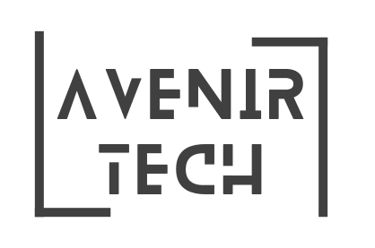Understanding the Key Components of Cloud Computing Architecture
Blog post descriptioExplore the core components of cloud computing architecture and learn how cloud solution services support scalable, secure, and efficient digital infrastructure.n.
AVENIR TECH
7/2/20253 min read


Cloud computing has emerged as a foundational technology that powers everything from business software to global data infrastructure. At its core lies a well-structured architecture that enables scalable, secure, and on-demand services over the internet.
Whether you're a business leader, a developer, or someone exploring digital transformation, understanding the essential components of cloud computing architecture is key to leveraging its full potential. Let’s break down the architecture and how it supports seamless cloud functionality.
What Is Cloud Computing Architecture?
Cloud computing architecture refers to the various technologies and components that work together to deliver cloud-based services. It includes both front-end and back-end elements, enabling users to access computing resources—like storage, servers, and software—on a pay-as-you-go basis.
This architecture supports different service models such as Infrastructure as a Service (IaaS), Platform as a Service (PaaS), and Software as a Service (SaaS).
Core Components of Cloud Computing Architecture
Cloud architecture can be divided into front-end, back-end, and network components, each playing a vital role in delivering services effectively.
1. Front-End Components
The front end is the user-facing part of the cloud environment. It includes:
Client Devices: Laptops, mobile phones, or tablets used to access cloud applications.
User Interfaces: Web-based dashboards or applications that allow users to interact with cloud services.
Web Servers or Browsers: The interface through which users communicate with the cloud.
These components help users access and manage data, applications, and services hosted in the cloud environment.
2. Back-End Components
The back end manages the actual cloud infrastructure and operations. It includes:
Servers: These are physical or virtual machines that process and store data.
Data Storage: Includes databases, object storage, and file systems that store and manage data securely.
Hypervisor: A virtualization layer that allows multiple virtual machines to run on a single physical server.
Application Software: These are back-end systems that support service delivery such as analytics engines or enterprise tools.
Resource Management: Tools and services that manage provisioning, automation, and scaling of cloud resources.
This is where the heavy lifting happens—from processing user requests to allocating resources and maintaining data integrity.
3. Cloud Delivery Models
Cloud services are delivered through three primary models:
IaaS (Infrastructure as a Service): Offers virtualized hardware like servers, storage, and networking.
PaaS (Platform as a Service): Provides a platform for developers to build and deploy applications.
SaaS (Software as a Service): Delivers ready-to-use software over the internet (e.g., email or CRM platforms).
Each model caters to different levels of control, flexibility, and management responsibilities.
4. Cloud Network
The network is the connective layer of the cloud architecture. It ensures smooth communication between front-end and back-end systems using:
Routers and Switches
APIs
Load Balancers
Firewalls and Security Protocols
This layer is essential for data flow, user access, security, and performance optimization.
5. Management and Security
Every cloud architecture includes tools and protocols to manage performance, monitor usage, and ensure security:
Identity & Access Management (IAM)
Monitoring & Logging Tools
Data Encryption
Disaster Recovery Systems
Security and governance are non-negotiable, especially in highly regulated industries.
Why Understanding Cloud Architecture Matters
A clear understanding of cloud architecture helps businesses:
Choose the right deployment model (public, private, or hybrid).
Optimize resources and reduce unnecessary costs.
Implement stronger data protection and compliance strategies.
Scale applications efficiently as per demand.
If you're considering adopting or expanding your cloud presence, partnering with a reliable provider that offers tailored cloud solution services can streamline the process and ensure your architecture supports long-term goals.
Frequently Asked Questions (FAQs)
Q1. What are the main layers of cloud computing architecture?
Cloud computing architecture is typically divided into three layers: the front end (user interface and access), the back end (servers, storage, and databases), and the network (connectivity, routing, and APIs). Each layer works together to deliver seamless cloud services.
Q2. Why is the back-end component so important in cloud computing?
The back end handles all the core processing, data storage, and application hosting. It's the engine room of the cloud where resources are allocated, workloads are managed, and service delivery happens.
Q3. What role does the network play in cloud architecture?
The network connects users to cloud services and ensures efficient data transmission between components. It also includes tools for load balancing, traffic routing, and security enforcement.
Q4. How does virtualization fit into cloud computing architecture?
Virtualization is a critical component of cloud architecture. It allows multiple virtual machines to operate on a single physical server, optimizing resource utilization and enabling scalable, flexible service delivery.
Q5. What are cloud solution services and why are they important?
Cloud solution services include consulting, implementation, and management of cloud environments tailored to specific business needs. These services ensure that companies can securely and efficiently use the cloud to improve productivity and innovation.
Final Thoughts
Cloud computing architecture forms the backbone of modern digital infrastructure. From user interfaces to backend storage and virtualized platforms, every component plays a vital role in delivering seamless, scalable, and secure services.
Organizations that aim to stay competitive must not only adopt cloud technologies but also understand the architecture that powers them. With the right cloud solution services, you can design a system that aligns with your business goals while ensuring security, performance, and cost-efficiency.
© Avenir Tech 2025. All rights reserved.
Subscribe to our newsletter
Company
